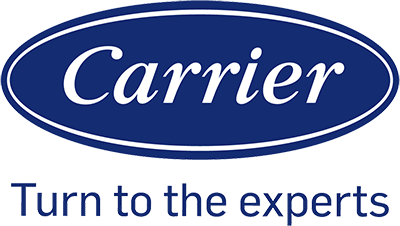Understanding Your Furnace’s Life Expectancy

When we consider the life expectancy of our furnace, it’s crucial to grasp that several factors impact its longevity. Typically, a furnace lasts between 15 to 30 years; however, this range can fluctuate based on the type of furnace, how well it’s maintained, and the quality of its initial installation.
- Types of Furnaces:
- Gas Furnace Lifespan: Generally lasts 15-20 years.
- Electric Furnace Lifespan: Can last up to 30 years.
The overall quality of the furnace plays a substantial role in its lifespan. A high-quality furnace that is well-maintained might edge closer to the upper limit of the life expectancy range or even surpass it.
- Factors Influencing Furnace Lifespan:
- Installation: Correct installation is critical.
- Maintenance: Regular maintenance can extend life.
- Usage: The more it runs, the shorter its lifespan may be.
- Environment: A clean, dry space is ideal.
As a furnace ages, it may require more frequent repairs. Being proactive about these repairs and staying on top of annual maintenance are key strategies we can use to maximize the service life of our furnace.
Remember, understanding our furnace’s life expectancy helps us plan for future replacement and avoid unexpected breakdowns. Keeping these factors in mind allows us to make informed decisions about our home heating systems.
Routine Maintenance to Prolong Furnace Life

Properly maintaining your furnace is crucial to extending its lifespan and ensuring optimal operation. We’ll guide you through essential maintenance tasks, focusing on annual routines and crucial care areas.
Importance of Regular Furnace Tune-Ups
Regular furnace tune-ups are instrumental in ensuring efficient operation and preventing unexpected breakdowns. We recommend scheduling annual maintenance with a certified technician who can perform a comprehensive assessment and cleaning. During a tune-up, technicians will typically inspect the furnace’s components, including the heat exchanger, burner, and blower motor. They’ll also check for proper airflow and thermostat operation.
- Annual Maintenance Checklist:
- Inspect heat exchanger for cracks
- Clean and adjust burner assembly
- Lubricate moving parts where necessary
- Test safety controls and startup cycle
- Replace worn or damaged belts
Air Filter Management
One of the simplest yet most effective routine maintenance tasks is managing your air filters. Dirty or clogged filters restrict airflow, forcing the furnace to work harder, potentially leading to increased wear and higher energy costs. We advise checking your filters every month and replacing or cleaning them (if reusable) at least every three months or more often if needed.
- Filter Replacement Tips:
- Turn off the furnace before replacing the filter.
- Ensure the new filter matches the size and type recommended by the manufacturer.
- Install the filter according to the airflow arrows on the side.
Ductwork and Ventilation Care
Maintaining your ductwork is vital for efficient system operation and air quality. Periodic ductwork inspections can reveal leaks, blockages, or buildup of debris that can inhibit performance. Sealing leaks and insulating ducts can conserve energy and reduce strain on your furnace. Ensure all vents and registers are not blocked by furniture or rugs to allow proper air circulation.
- Ductwork Inspection Points:
- Check for and seal any visible leaks
- Look for insulation gaps or damage
- Ensure vents are clear and unobstructed
By adhering to these maintenance steps, we help to not only prolong the life of the furnace but also maintain a consistent level of comfort and air quality in the home.
Optimizing Thermostat Use for Efficiency

To ensure the efficient use of our heating system and extend the lifespan of our furnace, we must optimize our thermostat settings. By utilizing programmable and smart thermostats effectively, we can save on energy bills while maintaining a comfortable home environment.
Programmable and Smart Thermostats
Programmable thermostats allow us to set temperature schedules based on our daily routines, automatically lowering the heat when we’re not home and raising it when we are. Smart thermostats take this a step further by learning our habits over time and making adjustments accordingly. They also provide the ability to control our heating remotely via a smartphone or computer, offering us insights into our energy usage. Upgrading to a smart thermostat can lead to significant energy savings and reduce the stress on our furnace by keeping the temperature more consistent.
- Key Benefits:
- Automatic scheduling of heating
- Remote access and control
- Energy usage tracking
- Learning capabilities for better temperature management
Recommended Thermostat Settings
We should aim for specific temperature settings to strike a balance between comfort and energy efficiency. During the winter, setting our thermostat to 68°F (20°C) while we’re awake and reducing it by 7-10 degrees Fahrenheit while we’re asleep or away can save us up to 10% a year on heating. It’s important not to let the temperature drop too low to prevent pipes from freezing.
- Winter Settings:
- 68°F (20°C) during awake hours
- 58-61°F (14-16°C) during sleep/away hours
Following these guidelines and using our thermostat strategically can lead to prolonged furnace life and reduced energy costs.
Recognizing When to Repair or Replace

We can extend the life of our furnace by understanding when it’s appropriate to repair it and when it’s time for a replacement. Proper evaluation of furnace issues and cost assessments are the cornerstones of making an informed decision.
Evaluating Furnace Performance Issues
We should begin by inspecting our furnace for any performance issues. Signs that our furnace may need repairs include:
- Unusual noises: Rattling, buzzing, or whining noises can indicate mechanical problems.
- Inconsistent heating: If some rooms are too hot or too cold, our furnace might not be distributing air evenly.
- High energy bills: An unexpected increase could suggest the furnace is running inefficiently.
For minor issues such as a dirty air filter or a faulty thermostat, simple repairs can often resolve the problem. However, frequent repairs or facing a major repair like a cracked heat exchanger may signal that it’s time to consider replacement.
Assessing Repair vs. Replacement Costs
When looking at costs, we should weigh the price of emergency repairs against the long-term financial benefits of a system replacement. Here’s a simple breakdown to consider:
| Repair Type | Typical Cost | Replacement Cost | Factor |
|---|---|---|---|
| Minor issues (e.g., filters) | $50 – $200 | – | Immediate Cost |
| Frequent repairs | $150 – $700 per visit | – | Long-Term Cost |
| Major repair | $1,000 – $3,000 | – | Longevity |
| Full system replacement | – | $2,500 – $6,000 | Energy Efficiency |
If the repair costs are approaching 50% of the cost of a new furnace, or if the furnace is near the end of its expected lifespan (typically around 15-20 years), replacement may be more cost-effective. An older furnace with repeated or severe issues is a strong candidate for furnace replacement to ensure reliability and efficiency.
Enhancing Furnace Efficiency and Safety

Improving the efficiency and safety of our furnace is not only critical for extending its lifespan but also for ensuring our home is warm and our energy bills are kept in check. Regular inspections of critical components and enhancing insulation are key strategies we can undertake.
Inspecting Critical Furnace Components
To begin, it’s imperative to inspect the furnace’s critical components regularly. An annual examination by a certified HVAC technician helps to identify and address wear and tear before it exacerbates. A few key areas we focus on include:
- Electrical Connections: We ensure they are tight and functioning properly to avoid safety hazards.
- Burners: We clean and inspect these to prevent inefficient burning, which can cause uneven heating and higher energy bills.
A well-maintained HVAC system not only operates more efficiently but also poses fewer safety concerns for the household.
Improving Home Insulation and Sealing
Another vital aspect is bolstering our home’s insulation and sealing. Enhanced insulation helps maintain a consistent temperature, reducing the burden on our HVAC system and leading to lower energy costs. We concentrate on:
- Insulation: Check and upgrade insulation in our attic, walls, and floors where necessary.
- Weatherstripping: Apply or replace weatherstripping around doors and windows to prevent drafts.
HVAC professionals often highlight that good insulation and sealing can significantly reduce the strain on our furnace, mitigating the uneven heating of rooms and promoting a more efficient energy use.
Frequently Asked Questions
What regular maintenance can prolong the life of my furnace?
We recommend routinely replacing the air filter every 1-3 months, scheduling annual inspections, and ensuring the blower motor and belt are in good condition. This routine care can significantly prolong your furnace’s life.
Are there specific components in my HVAC system that need more frequent attention to enhance longevity?
Yes, the air filter, blower motor, and thermostat require more frequent checks. Filters should be changed quarterly, while the blower motor and thermostat may need bi-annual inspections to ensure optimal performance.
What are the signs that a furnace needs repairs to prevent future breakdowns?
If your furnace is making unusual noises, failing to heat, frequently cycling on and off, or emitting strange odors, it’s likely in need of repair. Addressing these signs early can prevent more significant problems down the line.
Can upgrading parts of my HVAC system improve the overall lifespan?
Absolutely. Upgrading to a high-efficiency filter, installing a programmable thermostat, or adding a humidifier can not only improve efficiency but also reduce the strain on your HVAC system, thus enhancing its lifespan.
What professional servicing schedule is recommended to extend the durability of my heating system?
We advise having a professional HVAC technician service your system annually, ideally before the heating season, to ensure it is running efficiently and to correct any issues identified during the inspection.
How does the environment and location of a furnace affect its life expectancy?
The lifespan of your furnace can be impacted by the cleanliness of the environment in which it operates. Dusty or damp locations, or those with extreme temperature variations, may require more frequent maintenance and can lead to a shorter operational life.




